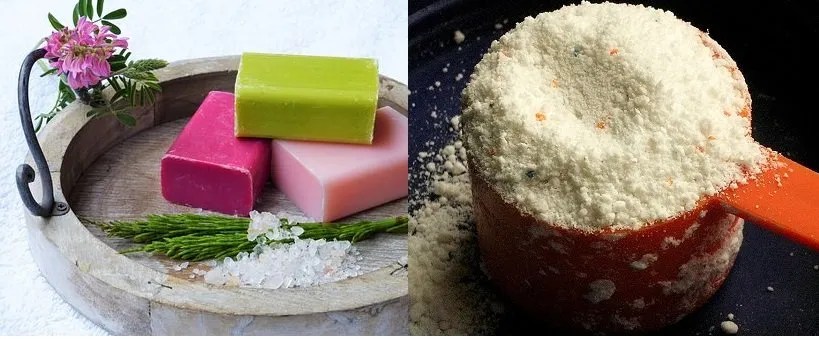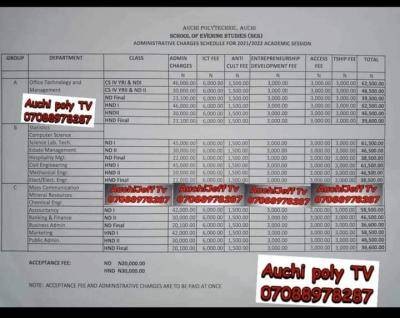
Detergent is a cleaning agent that is used to remove dirt and grime from surfaces. It is used in cleaning clothes, dishes, and many other surfaces. There are many types of detergents available on the market, but making your own can be a great way to save money and customize the product to your liking.
In this article, we will discuss the steps to make your own detergent. Before we begin, it is important to understand the ingredients that go into making a detergent. The main components of a detergent are surfactants, builders, and additives.
Surfactants are the cleaning agents that remove dirt and grime from surfaces. Builders are the ingredients that help to soften water and boost the cleaning power of the surfactants. Additives are used to enhance the cleaning power, add fragrance, and provide other benefits.
How To Make Detergents?
Firstly, we will be discussing the ingredients required for detergent making.
Ingredients:
To make a basic laundry detergent, you will need the following ingredients:
- 1 bar of soap (any type of soap can be used, but for best results, use a pure soap that does not contain any dyes or fragrances)
- 1 cup of washing soda (not baking soda)
- 1 cup of borax
- Water
- Essential oils (optional)
Equipment Needed
- Grater
- Large bowl
- Large pot
- Wooden spoon
- Measuring cup
- Funnel
- Storage container
Steps on How To Make Detergents:
Step 1 – Grate the soap: Use a cheese grater to grate the bar of soap into small pieces.
Step 2 – Mix the ingredients: In a large bowl, mix the grated soap, washing soda, and borax together.
Step 3 – Boil water: In a large pot, bring 4 cups of water to a boil.
Step 4 – Add the soap mixture: Once the water has come to a boil, add the soap mixture to the pot and stir well.
Step 5 – Reduce heat: Reduce the heat to low and continue stirring until the soap has dissolved completely.
Step 6 – Add water: Add 2 gallons of water to the pot and continue stirring.
Step 7 – Add essential oils (optional): If desired, add a few drops of essential oils for fragrance.
Step 8 – Let it cool: Let the mixture cool for a few hours, stirring occasionally.
Step 9 – Transfer to storage container: Once the mixture has cooled, use a funnel to transfer it to a storage container.
Usage:
Use ½ cup of the detergent per load of laundry. For best results, use warm or hot water.
Making detergents requires a combination of surfactants, builders, and additives. By using the right combination of chemicals, you can create a detergent that is effective at removing dirt and stains, while also providing additional benefits such as fabric softening and fragrance.
Knowing how to make detergents would not be complete without knowing the chemical compositions or materials used.
Chemicals for Making Detergents
To make detergents, you will need a variety of chemicals that serve different purposes in the cleaning process. These chemicals can be broadly divided into three categories: surfactants, builders, and additives. Let’s take a closer look at each of these categories:
Surfactants:
Surfactants are the main cleaning agents in detergents. They work by breaking down the surface tension of water, allowing it to penetrate deep into fabrics and lift away dirt and stains. Some common surfactants used in detergents include:
- Linear alkylbenzene sulfonate (LAS): LAS is a highly effective surfactant that is commonly used in laundry detergents. It is excellent at removing dirt and stains, and it works well in both hard and soft water.
- Sodium lauryl sulfate (SLS): SLS is a strong surfactant that is commonly used in dishwashing detergents. It is highly effective at cutting through grease and oil.
- Alcohol ethoxylates: Alcohol ethoxylates are a type of non-ionic surfactant that are often used in multi-purpose cleaners. They are highly effective at removing dirt and stains, and they work well in both hard and soft water.
Builders:
Builders are chemicals that help to improve the cleaning power of surfactants by softening hard water and neutralizing mineral ions that can interfere with the cleaning process. Some common builders used in detergents include:
- Sodium tripolyphosphate (STPP): STPP is a highly effective builder that is commonly used in laundry detergents. It helps to soften hard water and prevent mineral build-up on fabrics.
- Sodium carbonate (soda ash): Soda ash is another effective builder that is commonly used in laundry detergents. It helps to soften hard water and enhance the cleaning power of surfactants.
- Zeolites: Zeolites are natural minerals that are often used as builders in laundry detergents. They help to soften hard water and prevent mineral build-up on fabrics.
Additives:
Additives are chemicals that are added to detergents to provide additional benefits, such as fragrance, color, and fabric softening. Some common additives used in detergents include:
- Enzymes: Enzymes are proteins that help to break down tough stains, such as protein and starch. They are commonly used in laundry detergents.
- Optical brighteners: Optical brighteners are chemicals that help to make fabrics appear brighter and whiter. They work by absorbing UV light and emitting it as blue light.
- Fragrances: Fragrances are added to detergents to provide a pleasant scent. They can be synthetic or natural, and they come in a wide variety of scents, from floral to citrus to musk.
- Fabric softeners: Fabric softeners are chemicals that help to soften fabrics and reduce static cling. They are commonly added to laundry detergents.
How To Make Bar Soaps for Home or Commercial Purpose
Making bar soap is a fun and rewarding DIY project that you can do at home with just a few basic ingredients and tools. Here are the steps to make your own bar soap:
Materials Required?
- 1 pound of soap base (such as goat milk soap base, shea butter soap base, etc.)
- Essential oils (optional)
- Dried herbs (optional)
- Soap mold
- Double boiler or a heat-safe bowl and pot
- Silicone spatula
- Rubbing alcohol (in a spray bottle)
Instructions on How To Make Bar Soaps
Step 1 – Cut the soap base into small cubes or pieces and place them in a double boiler or a heat-safe bowl set over a pot of boiling water.
Step 2 – Heat the soap base over medium heat, stirring occasionally with a silicone spatula, until it has melted completely.
Step 3 – Remove the soap base from the heat and let it cool for a few minutes.
Step 4 – If desired, add a few drops of essential oils and/or dried herbs to the soap base and stir well.
Step 5 – Pour the soap mixture into a soap mold and let it cool and harden for several hours or overnight.
Step 6 – Once the soap has hardened, carefully remove it from the mold.
Step 7 – If there are any rough edges or imperfections, smooth them out with a knife or sandpaper.
Step 8 – To prevent any air bubbles from forming on the surface of the soap, spray it with rubbing alcohol.
Step 9 – Allow the soap to cure for at least 4 weeks before using it. This will help it to harden and become less likely to melt quickly in the shower.
Step 10 – Once the soap has cured, it’s ready to use and enjoy!
Chemicals for Making Bar Soaps
The chemicals required for making bar soap can vary depending on the type of soap you want to make. However, here are the common ingredients required for making a basic bar soap:
- Soap Base: This is the main ingredient that forms the basis of your soap. You can choose from a variety of soap bases such as glycerin, shea butter, goat milk, coconut oil, etc.
- Lye (sodium hydroxide): Lye is an essential ingredient for making bar soap. It is used to react with the fats and oils in the soap base, resulting in saponification, which is the process of creating soap.
- Water: You’ll need water to dissolve the lye and mix it with the soap base.
- Essential oils: Essential oils are added to the soap for fragrance and their therapeutic benefits.
- Herbs, spices, and other additives: You can add herbs, spices, exfoliants, and other additives to your soap for texture, color, and other properties.
- Colorants: If you want to add color to your soap, you can use natural colorants such as mica powder, cocoa powder, and clay.
It’s important to handle lye with care as it is a caustic substance that can cause severe burns and damage to your skin and eyes. Always wear protective gloves and goggles when handling lye, and follow proper safety guidelines for soap-making.
Detergent Vs Bar Soap Which is Better?
To make detergents, you will need a variety of chemicals that serve different purposes in the cleaning process. These chemicals can be broadly divided into three categories: surfactants, builders, and additives. Let’s take a closer look at each of these categories:
Surfactants:
Surfactants are the main cleaning agents in detergents. They work by breaking down the surface tension of water, allowing it to penetrate deep into fabrics and lift away dirt and stains. Some common surfactants used in detergents include:
- Linear alkylbenzene sulfonate (LAS): LAS is a highly effective surfactant that is commonly used in laundry detergents. It is excellent at removing dirt and stains, and it works well in both hard and soft water.
- Sodium lauryl sulfate (SLS): SLS is a strong surfactant that is commonly used in dishwashing detergents. It is highly effective at cutting through grease and oil.
- Alcohol ethoxylates: Alcohol ethoxylates are a type of non-ionic surfactant that are often used in multi-purpose cleaners. They are highly effective at removing dirt and stains, and they work well in both hard and soft water.
Builders:
Builders are chemicals that help to improve the cleaning power of surfactants by softening hard water and neutralizing mineral ions that can interfere with the cleaning process. Some common builders used in detergents include:
- Sodium tripolyphosphate (STPP): STPP is a highly effective builder that is commonly used in laundry detergents. It helps to soften hard water and prevent mineral build-up on fabrics.
- Sodium carbonate (soda ash): Soda ash is another effective builder that is commonly used in laundry detergents. It helps to soften hard water and enhance the cleaning power of surfactants.
- Zeolites: Zeolites are natural minerals that are often used as builders in laundry detergents. They help to soften hard water and prevent mineral build-up on fabrics.
Additives:
Additives are chemicals that are added to detergents to provide additional benefits, such as fragrance, color, and fabric softening. Some common additives used in detergents include:
- Enzymes: Enzymes are proteins that help to break down tough stains, such as protein and starch. They are commonly used in laundry detergents.
- Optical brighteners: Optical brighteners are chemicals that help to make fabrics appear brighter and whiter. They work by absorbing UV light and emitting it as blue light.
- Fragrances: Fragrances are added to detergents to provide a pleasant scent. They can be synthetic or natural, and they come in a wide variety of scents, from floral to citrus to musk.
- Fabric softeners: Fabric softeners are chemicals that help to soften fabrics and reduce static cling. They are commonly added to laundry detergents.
Detergents Vs Bar Soap Which is better?
For washing white fabrics, detergents are generally better than bar soaps. Here’s why:
Detergents contain ingredients such as surfactants and enzymes that are specifically formulated to break down and remove tough stains and dirt particles from fabrics. They are designed to work well in both hard and soft water, which can be important for getting whites as bright as possible.
In contrast, bar soaps may leave residue on fabrics if not rinsed thoroughly, which can cause whites to look dull or gray over time. They are also not as effective as detergents when it comes to removing tough stains and dirt particles from fabrics.
That being said, some people still prefer to use bar soap for washing white fabrics because it can be gentler on the fabric and less likely to cause yellowing or discoloration over time. If you choose to use bar soap, make sure to rinse the fabric thoroughly to remove any residue that may be left behind.



